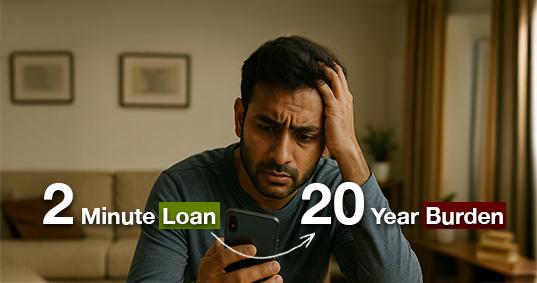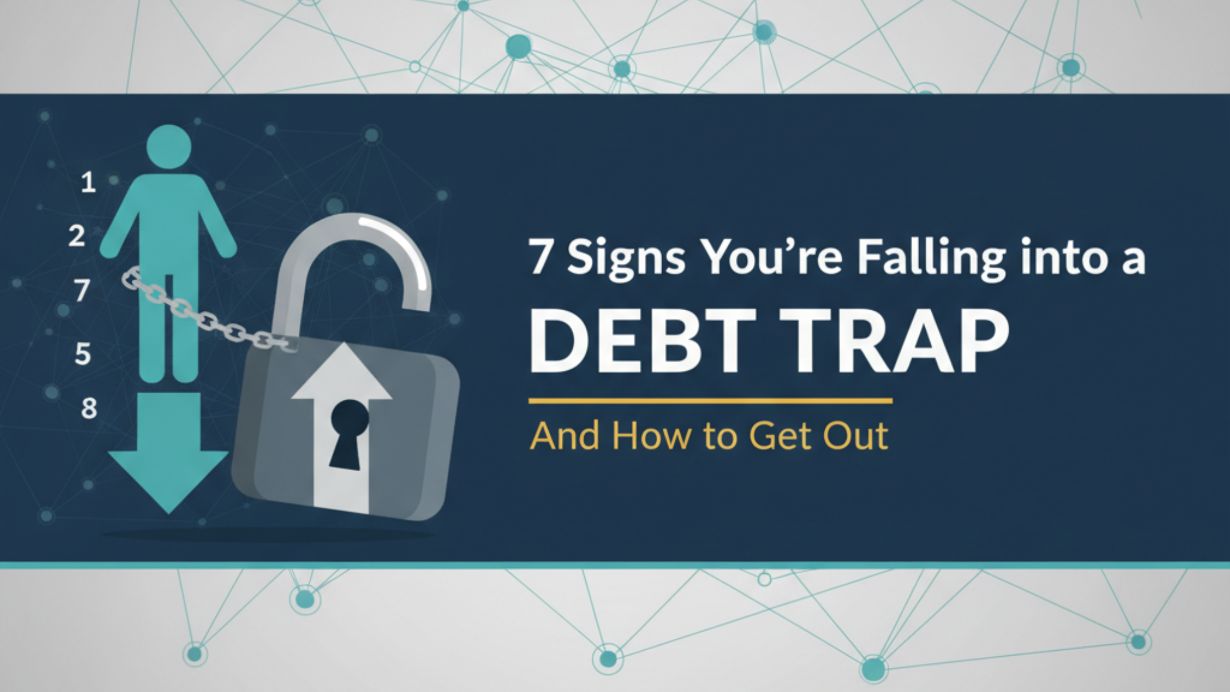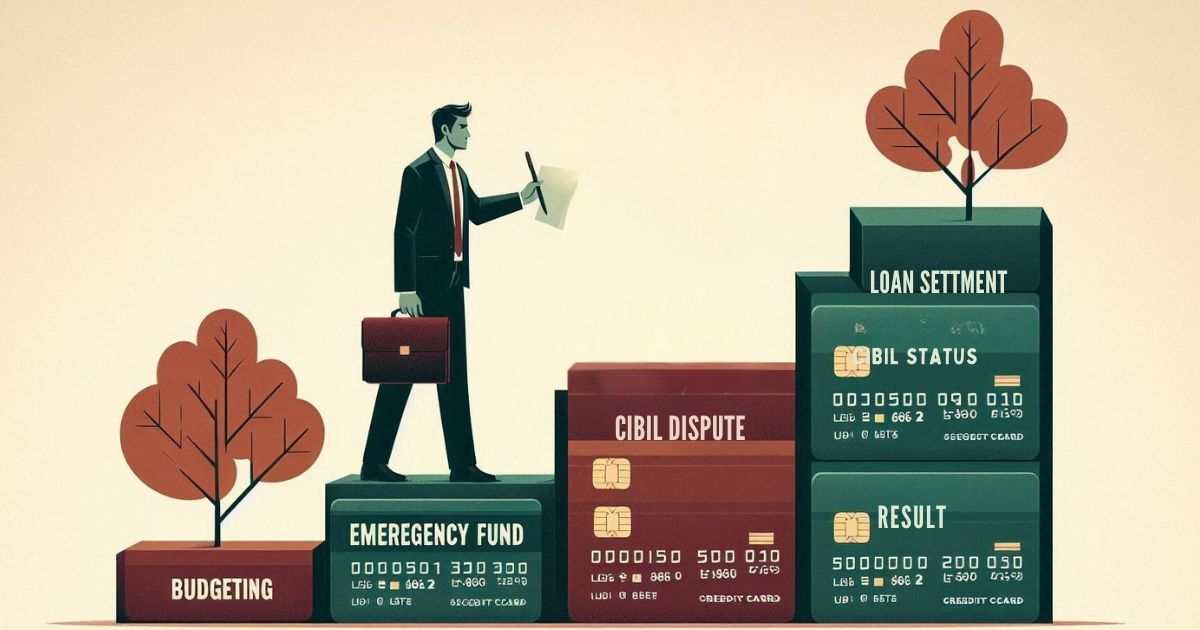· Personal Finance & Credit Awareness · 5 min read
5 Credit Card Red Flags You Should Never Ignore
Are you falling into the credit card and EMI trap? From treating your credit limit as income to ignoring fine print, these five red flags show how everyday habits can harm your financial stability. Learn smart debt management and when to seek expert help from ExpertPanel.org to stay stress-free.
.CSkoRYi3.jpg)
Introduction
“Congratulations! Your credit limit is now ₹1,50,000!”
Does that message make you think — “New phone? Foreign trip? Designer bag?”
Here’s the truth: that money isn’t yours. It’s your bank’s trust that you’ll repay on time. In India, credit card spending crossed ₹1.89 lakh crore in 2025 — and a significant portion of that remains unpaid. (Source: Business Standard)
Credit cards are powerful financial tools, but misused, they can quickly turn into a trap.
Let’s explore the five major red flags that suggest your credit card may be managing you, not the other way around.
Red Flag #1: Treating Your Credit Limit as Extra Income
When banks increase your credit limit, it’s not a reward — it’s more borrowing power. Many people mistake it for a sign of higher income and end up spending beyond their means.
Think of it this way: if someone lends you their car for the weekend, you can use it — but it doesn’t become yours. The same applies to your credit limit.
If managing spending feels difficult, the solution isn’t getting another card — it’s improving financial discipline.
You can learn practical strategies to manage debt and credit wisely on ExpertPanel.org, where experienced professionals help you build a debt-free future.
Red Flag #2: Being Already Under Loan or Debt Pressure
Personal loan and credit card borrowings in India are at record highs. Even Nithin Kamath (Founder, Zerodha) recently pointed out that many people are now borrowing to meet daily expenses. (Source: LiveMint)
Take one of our clients as an example: his car loan EMI was ₹23,000, and he had two active credit cards. After missing a single payment, late fees and interest snowballed his debt to ₹3.5 lakh within a year.
According to the Financial Times, India’s household debt-to-GDP ratio has crossed 43%, while savings are at a 50-year low.
If you’re already repaying multiple loans, adding credit card debt can make the situation worse. Avoid using a credit card to pay off another loan.
If you feel trapped in a cycle of debt, connect with ExpertPanel.org — an IIT–IIM-led platform that has helped over 35,000 individuals recover from debt stress and regain control over their finances.
Red Flag #3: Losing Track of Your Expenses
Here’s a simple test: do you know how much you spent on Amazon, Zomato, or Meesho last month?
If you don’t, that’s a warning sign.
Frequent card swipes make it easy to lose track of small expenses, which later pile up into a shockingly high bill. In informal tests, even budget-conscious individuals underestimated their spending by 25–50%.
A recent India Today report revealed that one major cause of rising credit defaults is a lack of expense awareness.
Red Flag #4: Not Understanding Credit Card Terms
Reward points, cashback, and lounge access sound attractive — but the real cost often hides in the fine print.
For example:
If your monthly bill is ₹50,000 and you pay only the minimum ₹2,500, the remaining ₹47,500 attracts 3–4% interest per month — nearly 40% annually.
According to India Today, poor understanding of interest cycles and billing periods is one of the top reasons for defaults. Before using your card, make sure you understand these key terms:
● Grace Period
● Billing Cycle
● Interest Start Date (especially for cash withdrawals)
If you face unfair charges or harassment from recovery agents, you can raise a complaint under RBI’s Fair Practice Code through the RBI Complaint Management System (CMS).
Red Flag #5: Depending upon EMI for lifestyle upgrade
“New phone? EMI pe le lo.”
“Kashmir trip? EMI pe book kar lo.”
“Birthday party? EMI se de do.”
This mindset creates an illusion of affordability while leading to financial stress. It’s understandable to buy essentials like a refrigerator or washing machine on EMI, but using it for luxuries — such as gadgets or vacations — is a warning sign.
By 2025, Buy Now Pay Later (BNPL) and EMI schemes have grown rapidly, leading to a sharp rise in unsecured loans. Once this becomes routine, paying interest becomes a part of your lifestyle.
Conclusion
Should You Get a Credit Card?
Having a credit card isn’t wrong. Having one without proper understanding is.
Before applying, ask yourself:
● Can I pay my full bill every month?
● Do I regularly track my expenses?
● Am I already managing existing loans?
● Do I use EMI only for essentials, not lifestyle choices?
● Do I fully understand my card’s terms and interest rates?
If you answered “Yes” to all — you’re financially ready.
If not, take time to learn first.
If you’re already facing credit card or loan payment issues, visit ExpertPanel.org for a free consultation. Our team of IIT–IIM finance professionals has guided over 35,000 people toward financial freedom.
FAQs
1. Can I go to jail for missing credit card payments?
No, missing payments is a civil issue, not a criminal one. However, recovery agents may contact you for repayment. If you face harassment, report it to the RBI CMS Portal.
2. How much of my income should go toward EMIs or loans?
Financial experts recommend that your total EMIs, including credit card dues, should not exceed 30% of your monthly income.
3. What happens if I pay only the minimum amount due on my credit card?
You’ll continue to be charged high interest (up to 40% annually) on the remaining balance, and your CIBIL score may drop if payments are delayed.
4. Can I restructure my credit card debt if I can’t pay on time?
Yes. You can formally request your bank for a loan restructuring or settlement plan — it’s your legal right. If your request is denied, experts at ExpertPanel.org can guide you through the process.
5. How can I protect myself from harassment by recovery agents?
If recovery agents use threats or abusive behavior, file a complaint with the RBI Ombudsman or National Consumer Helpline (consumerhelpline.gov.in).
Disclaimer- The information shared in this blog is for general awareness only. Every individual’s situation may differ, and the actual process or outcome can vary based on personal and legal circumstances.



